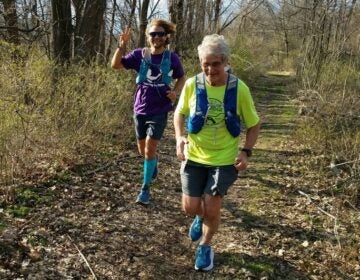In New Jersey the state sets the high bar for school safety
This is part of a series from education blogger Laura Waters of NJ Left Behind.
This past Friday 20 young children and six adults were murdered at Sandy Hook Elementary School in Newtown, Connecticut and, naturally, parents all over the country worry about whether or not their children are safe at school. A common misperception is that safety measures are locally controlled by a board of education or superintendent. In New Jersey, a combination of legislature and Department of Education oversight tightly regulates the way districts prepare for and respond to threats.
Historically, this statewide standardization stemmed from massacres like Columbine in 1999 and September 11th, 2001. Patrick Kissane, the incoming president of the N.J. Association of School Resource Officers noted, “we’ve come a long way in 13 years.”
Every school in the state is required to annually update security plans and formalize relationships with local law enforcement. Updated blueprints of all buildings are distributed annually. Every school is required to hold at least one fire drill and one school security drill per month. At minimum, schools must hold two each year for active shooters, non-fire evacuations, bomb threats and lockdowns. Each sort of threat is described in specific terms by the Department of Education. For example, here is the section on active shooters (pdf):
“An Active Shooter or armed assault on school grounds involves one or more individuals’ intent on causing physical harm to students and staff. Intruders may possess “weapons” which include but are not limited to: gun(s); assault rifle(s); explosives(s); knife(s) including all other edged weapons; or other harmful devices. In an active shooter situation one or more subjects who are believed to be armed/has used/has threatened to use a weapon to inflict series bodily injury or death on other person(s) and/or continues to do so while having unrestricted access to additional victims; their prior actions have demonstrated their intent to continuously harm others; and, their overriding objective appears to be that of mass injury and murder.”
Of course there’s some variation in security protocol from school to school: Lakewood High School installed metal detectors last Spring; Swedesboro-Woolwich School District locks all its doors during the school day; Freehold Borough was one of the first in the country to implement iris-scanning devices; the Vineland Police Department monitors local school buildings through a remote camera feed. Some districts hire security guards while others buy identity-confirmation software.
New Jersey is considered by many to have some of the most aggressive school safety measures in the country. We employ best practices and up our game when necessary. N.J. School Boards Association’s Executive Director Lawrence Feinsod said on Tuesday that school officials are “reassessing their school security measures” and that “Dec. 14th was a game changer.”
But here’s the hard truth. Given all of New Jersey’s administrative code and regulations and protocol and monthly drills, would our children be safe if a mentally unstable person armed with semi-automatic assault rifles shot his way into a school building, past the security cameras and retinal software and locked doors? No, of course not.
Meanwhile, legislators and lobbyists are responding in disparate ways. In Colorado, Gov. John Hickenlooper introduced legislation that would direct more resources towards emergency psychiatric services and speed information towards gun registries. In Tennessee, Sen. Frank Niceley will push a new bill that allows the state to pay for secretly armed teachers in classrooms. On Friday the National Rifle Association will hold a press conference intended to protect current gun laws.
Amidst all the jockeying, parents – in New Jersey and elsewhere – will continue to worry. Because a school isn’t a sanctuary. It’s a public building that can’t be shrouded in a bullet-proof bubble. Pres. Obama said at an interfaith prayer vigil in Newtown, “It comes as a shock at a certain point where you realize, no matter how much you love these kids, you can’t do it by yourself. That this job of keeping our children safe, and teaching them well, is something we can only do together, with the help of friends and neighbors, the help of a community, and the help of a nation. And in that way, we come to realize that we bear a responsibility for every child because we’re counting on everybody else to help look after ours; that we’re all parents; that they’re all our children.
This is our first task — caring for our children. It’s our first job. If we don’t get that right, we don’t get anything right. That’s how, as a society, we will be judged. And by that measure, can we truly say, as a nation, that we are meeting our obligations? Can we honestly say that we’re doing enough to keep our children — all of them — safe from harm?”
I don’t know what “enough” is, except it’s somewhere in the vicinity of “all that we can.” To me that means tighter gun control and better mental health services. We’ve enshrined the Second Amendment (the right for state militias to bear arms, by the way, not individuals) as some sort of iconic, untouchable ideal. Maybe we’d be better off if we worshipped at the altar of, as the President said, “keeping children safe and teaching them well.”
———-
Laura Waters is president of the Lawrence Township School Board in Mercer County. She also writes about New Jersey’s public education on her blog NJ Left Behind. Follow her on Twitter @NJLeftbehind.
WHYY is your source for fact-based, in-depth journalism and information. As a nonprofit organization, we rely on financial support from readers like you. Please give today.




